Results 8,421 to 8,430 of 12096
Thread: Anandtech News
-
07-27-18, 10:43 AM #8421
Anandtech: Intel Announces Q2 2018 Results: Setting More Records
All across the hardware industry 2018 is shaping up to be a banner year for earnings, and the 800lb gorilla that is Intel is no exception. Reporting their Q2’2018 earnings yesterday afternoon, Intel booked $17.0B in revenue for the quarter, setting another new Q2 revenue record for the company. Meanwhile net income, while not being noted as a record for the company, was still very high at $5.0B. This puts Intel well ahead of itself both on a year-over-year and sequential basis, topping Q1’2018 and Q2’2017, both of which were also record quarters. All told, Intel’s both Intel’s revenue and net income for the quarter increased by $2.2B year-over-year, while against Q1 they’re up $0.9B and $0.5 respectively.
Meanwhile Intel’s all-important gross margin has held relatively steady at 61.4%, which is down two-tenths from Q2’2017, but up from the previous quarter.
Breaking down the numbers by Intel’s various business groups, all of Intel’s groups saw revenue growth for the year. This ranges from 6% for the client computing group, up to 27% for the data center group. And even on a less-comparable quarterly basis, every group except CCG has seen some growth.Intel Q2 2018 Financial Results (GAAP) Q2'2018 Q1'2018 Q1'2017 Revenue $17.0B $16.1B $14.8B Operating Income $5.3B $4.5B $3.8B Net Income $5.0B $4.5B $2.8B Gross Margin 61.4% 60.6% 61.6% Client Computing Group Revenue $8.7B -3% +6% Data Center Group Revenue $5.5B +6% +27% Internet of Things Revenue $880M +5% +22% Non-Volatile Memory Solutions Group $1.1B +10% +23% Programmable Solutions Group $517M +4% +18%
Overall Intel has been making a concentrated effort to pivot towards (or at least play up) what the company sees as the segments primed for growth – which Intel is calling its “data-centric” business – and isolate it from the “PC-centric” client computing group. Looking at revenue growth it’s easy to understand why; client computing revenue has been slow to move for years now, while Intel’s other businesses have grown much faster, and as an added kicker are generally more profitable too. None the less, Intel can’t ignore the fact that the client computing group alone makes up more than half of the company’s revenue. However at the rate things are going, this might be one of the last quarters where that is true.
On the client computing front, Intel is citing the commercial and enthusiast segments as being the driving factors for the growth, which is unsurprising as the two have been consistent performers with higher-than-average spending. Beyond that, Intel hasn’t broken down client computing revenue by form factor or such this quarter, so unfortunately we don’t get any insight into how the recently launched Coffee Lake mobile parts have done.
Besides being a more stagnant space, the biggest challenge Intel faces with the client computing group right now is in fact the company’s biggest challenge, which is the stalled development of their 10nm process. As part of today’s earnings call the company has announced that they are still on-track for 10nm mass production in 2019, however they aren’t expecting complete systems to reach store shelves until the holiday shopping season. Which means Intel will be relying on their 14nm technology and resulting products for the next 12 to 15 months, which is going to make it harder to entice already fickle consumers into upgrading.
The news is of course happier with Intel’s other business, all of which have grown at a much greater rate. Intel continues to sell Xeon processors to server vendors and cloud server providers at a good clip, with revenues there improving by 27% year-over-year. However Intel did miss their own projections here, as the unit didn’t grow by quite as much as the company once predicted. There’s clearly still very high demand for server processors, but Intel is going to be facing off with AMD and EPYC, which is finally finding its footing. And in the longer term, according to Intel’s own accidentally published roadmaps, the company won’t have 10nm-class Xeons read until 2020, which means Intel will likely be playing defense against AMD starting in 2019.
The rest of the “data-centric” business is a similar upbeat story. FPGA sales are up, non-volatile memory sales are up, and even IoT sales are up. The reasons are varied, but overall NAND prices have been good and the drive for neural networking hardware is helping sales on both the FPGA (cloud) and IoT (edge) sides.
Overall then, based what has now been two strong quarters of growth for Intel, the company is expecting the rest of the year to go similarly. And indeed at this point they’re expecting 2018 as a whole to be their third consecutive record year. Which is especially impressive at a time where Intel’s core manufacturing advantage has increasingly slipped away. Conversely however, there remains the lingering question of whether Intel can sustain this kind of growth for the next year without their next-generation fabrication technology.
Gallery: Intel Announces Q2 2018 Results: Setting More Records





More...
-
07-27-18, 10:43 AM #8422
Anandtech: The OnePlus 6 Review: Among The Best Of 2018
Over the last several years OnePlus has evolved from a vendor looking to disrupt the smartphone market to a company whose flagships are now eagerly awaited every year. The OnePlus 6 is the company’s biggest design change yet, and brings with it flagship specifications while still maintaining its characteristic advantage in terms of product pricing as well as long-term software support.
The OnePlus 6 impresses a lot as it tops the charts in terms of performance, has great battery life, an outstanding main camera and an excellent screen. There’s really very little negatives about the OnePlus 6, so tune in for the full detailed review.
More...
-
07-27-18, 12:32 PM #8423
Anandtech: ASUS Launches WS C246 PRO: 4 PCIe 3.0 x16, Two M.2, Optional SAS RAID
ASUS has introduced its first Intel C246-based motherboard for Intel’s Xeon E processors. The WS C246 PRO platform is aimed at rather serious machines that use up to four PCIe 3.0 x16 expansion cards, up to eight SATA storage devices, and two M.2 SSDs. For those who plan to use SAS storage with the motherboard, ASUS will also offer optional eight-port SAS 12G RAID cards.
The ASUS WS C246 PRO motherboard is based on Intel’s C246 chipset (codenamed Cannon Point-H WS) and therefore supports Intel’s Xeon E-2100-series processors for entry-level servers and workstations as well as Intel’s 8th Gen Core i3/i5/i7 chips along with their low-cost Pentium Gold and Celeron counterparts. The mainboard is outfitted with an eight-phase CPU VRM that uses solid-state inductors and capacitors to maintain steady operation during protracted workloads and also to ensure a long lifespan for the product. The WS C246 PRO is not equipped with a TPM module, but there is a connector for it, so workstation OEMs can install it themselves. As for remote management, the platform supports the WFM 2.0 spec as well as ASUS’ proprietary ACC IT management platform.
Memory support is something that all Intel C246-based motherboards are going to have in common. Just like the rest of the C246 pack, the WS C246 PRO has four DDR4 DIMM slots supporting up to 64 GB of DDR4-2667 DRAM with or without ECC, depending on the CPU and modules used.
Things start to get interesting with PCIe slots configuration of the WS C246 PRO. The motherboard has four PCIe 3.0 x16 (electrical) connectors that can work in x16/x8, x8, x4 and x4 modes (logical). The first two are controlled by the CPU, whereas the remaining two rely on the C246 PCH. One of the reasons why ASUS outfitted the motherboard with so many electrical PCIe 3.0 x16 slots is the fact that it will supply the motherboard with its PIKE II 3008-8i 8-port SAS 12G RAID or PIKE II 3108-8i 8-port SAS 12G HW RAID controllers to parties interested in using SAS storage devices. Both HBA cards use a PCIe 3.0 x8 interface, so Intel needed to ensure that there are enough slots not only for SAS controllers, but for whatever other cards a customer may need to use (a high-end PCIe SSD, for example). In addition to PCIe 3.0 x16 slots, there are also two PCIe 3.0 x1 slots.
Moving on to other storage capabilities of the WS C246 PRO. The motherboard comes with eight SATA connectors as well as two M.2 slots supporting an up to M.2-2280 and an up to M.2-22110 SSDs. ASUS does not detail how the latter work and share resources with PCIe slots as well as SATA ports, but keep in mind that C246 PCH only supports eight SATA ports in total.
When it comes to general I/O interfaces, the WS C246 PRO features a fairly standard set of connectors, including two GbE ports, four USB 3.1 Gen 1 Type-A headers (there are internal ones too), USB 3.1 Gen 2 Type-A & Type-C receptacles, four display outputs (DP, HDMI, DVI, D-Sub), 3.5-mm jacks for a 7.1-channel audio subsystem, and so on.
ASUS did not touch upon pricing details and availability timeframe of the WS C246 PRO motherboard in its announcement, but keeping in mind market specifics, expect the first workstations based on this platform to arrive in the coming months. As for pricing, this is a specialized premium product and will be priced accordingly, especially when bundled with SAS HBAs.
Buy Intel Core i7-8700K on Amazon.comASUS Intel C246 ATX Motherboard WS C246 PRO Supported CPUs LGA1151 v2 CPUs
Xeon E
8th Gen Core i3/i5/i7, Pentium, CeleronPCH Intel C246
(Cannon Point-H WS)Graphics Intel UHD Graphics from CPU
PCIe 3.0 x16 slotDisplay Outputs 1 × DisplayPort 1.2
1 × HDMI 2.0a
1 × DVI-D
1 × D-SubMemory 4 × DDR4 DIMM
Up to 64 GB of DDR4-2667
with or without ECC, depending on CPUSlots for Add-In-Cards Electrical Logical 1 × PCIe 3.0 x16
1 × PCIe 3.0 x8
2 × PCIe 3.0 16
1 × PCIe 3.0 x1x16/x8
x8
x4
x1Ethernet LAN 1: Intel I219LM GbE PHY
LAN 2: Intel I210AT GbE PHYStorage M.2 1 × M.2-22110 (PCIe 3.0 x4 or SATA?)
1 × M.2-2280 (PCIe 3.0 x4 or SATA?)SATA 8 × SATA 6 Gbps SAS
(Optional)ASUS PIKE II 3008-8i 8-port SAS 12G RAID
ASUS PIKE II 3108-8i 8-port SAS 12G HW RAIDAudio 7.1-channel audio with analog and S/P DIF outputs USB 4 × USB 3.1 Gen 1 Type-A
1 × USB 3.1 Gen 2 Type-A
1 × USB 3.1 Gen 2 Type-CSerial Ports 1 × internal COM port Other I/O 1 × TPM header
1 × internal USB 3.1 Gen 1 Type-A (for BIOS flashing)
2 × internal USB Type-A (for front panel)Monitoring CPU Temperature
Fan RPMManagement WfM 2.0, DMI 3.0, WOL by PME, WOR by PME, PXE Additional Features ASUS Control Center (ACC), an integrated IT management platform for remote monitoring, controlling, and updating ASUS commercial products (servers, workstations, etc). Form-Factor ATX (305 mm × 244 mm | 12" × 9.6")
Related Reading:
- ASRock Launches C246M WS Micro-ATX Motherboard for Xeon E CPUs
- Intel Launches Coffee Lake Xeon E (Entry): The Next-Gen E3-1200
- iBASE Lists C246 Motherboards for Intel Xeon E CPUs
- Intel Xeon E3-1200 v7 Will Become Xeon Entry (Xeon E)
More...
-
07-27-18, 12:32 PM #8424
Anandtech: Samsung Starts Production of 16 Gb LPDDR4X Chips Using 2nd Gen 10nm Tech
Samsung this week announced that it has begun manufacturing its new LPDDR4X memory chips using its second-generation 10 nm-class fabrication process (which is traditionally called 1y nm). The new technology enables the company to slightly cut down power consumption of the new memory devices as well as to reduce the thickness of actual LPDDR4X memory packages installed into smartphones.
Samsung’s new LPDDR4X memory devices feature a 16 Gb capacity and are rated to run at 4266 MT/s. The manufacturer says that the new DRAMs consume 10% less power than their predecessors made using its first-gen 10 nm-class (1x nm manufacturing technology), but without reducing industry-standard voltages for this type of memory (VDD1=1.1V, VDD2=1.8V, VDDQ=0.6V). Meanwhile Samsung is not disclosing anything about die sizes, but if their second-generation tech is indeed a smaller process, then the resulting chips should, in time, be at least slightly cheaper to manufacture.
Meanwhile, the company says that its new 8 GB LPDDR4X package, which consists of four new 16 Gb dies, features a 20% lower thickness compared to the company’s previous-gen 8 GB LPDDR4X-4266 package. Naturally, such packages enable makers of smartphones to make their devices slightly thinner, assuming that they can bring thickness of other components down too. In addition to the new 8 GB LPDDR4X stacks, Samsung also plans to offer LPDDR4X in 4 GB and 6 GB packages for slightly more affordable smartphones.
Samsung started to use its 1y nm production technology for DRAM back in December, 2017. The new LPDDR4X ICs seem to be the company’s second product to use the new fabrication process. Considering the high-density nature of LPDDR4X, usage of the 2nd Gen 10nm-class fabrication process for manufacturing of such ICs may indicate that yields of the tech have improved since last year. In the coming months the company will further expand usage of its 1y nm production process.
Large DRAM makers usually make announcements regarding mass production after they ship the first batch to a customer. Therefore, expect the new 16 Gb LPDDR4X ICs from Samsung inside actual devices in the coming months.
Related Reading:
- Samsung Announces First LPDDR5 DRAM Chip, Targets 6.4Gbps Data Rates & 30% Reduced Power
- SK Hynix Announces 8 GB LPDDR4X-4266 DRAM Packages
- Samsung Introduces 8 GB LPDDR4-4266 Package for Mobile Devices
- Hot Chips 2016: Memory Vendors Discuss Ideas for Future Memory Tech - DDR5, Cheap HBM, & More
- Samsung Starts Production of 8 Gb DDR4-3600 ICs Using 2nd Gen 10nm-Class Tech
More...
-
07-28-18, 10:27 AM #8425
Anandtech: ASUS Publishes List of Upcoming Intel Z390-Based Motherboards
ASUS has published a list of its upcoming motherboards powered by Intel’s yet-not-announced Z390 chipset. As expected, the company will offer several families of platforms featuring over a dozen of models aimed at different market segments and supporting different features.
ASUS intends to offer Intel Z390-based motherboards across five families of its products. The top-of-the-range Z390 offerings aimed at enthusiasts and overclockers will be marketed as the ROG Maximus XI series. For gamers and enthusiasts ASUS will offer four ROG Strix Z390 mainboards in different form-factors. For gamers with lower budgets the company will release eight Z390 motherboards under the TUF and Prime brands. In addition, there will be a single Z390 Dragon mainboard that will be available only in China.
The list of ASUS motherboards was published in a description to a new BIOS feature that was introduced on July 23. The advertised BIOS feature enables to create user profiles in BIOS and therefore better tailor PCs for particular users or use cases. The capability is supported not only on the upcoming Intel Z390-based motherboards, but also on existing Intel 300-series platforms from ASUS.ASUS' Upcoming Z390 Motherboards Form-Factor ROG Maximus ROG Strix TUF Prime Dragon ATX ROG Maximus XI Apex ROG Strix Z390-E Gaming TUF Z390-Plus Gaming Prime Z390-A Z390-Dragon ROG Maximus XI Code ROG Strix Z390-F Gaming TUF Z390-Plus Gaming Wi-Fi Prime Z390-P - ROG Maximus XI Extreme ROG Strix Z390-H Gaming TUF Z390-Pro Gaming - ROG Maximus XI Formula - - ROG Maximus XI Hero ROG Maximus XI Hero Wi-Fi Micro-ATX - TUF Z390M-Pro Gaming Prime Z390M-Plus TUF Z390M-Pro Gaming
Wi-Fi- Mini-ITX ROG Strix Z390-I Gaming -
The fact that the world’s largest maker of motherboards accidentally publishes the list of its Intel Z390-based platforms indicates that the product family has been formed and the company is probably nearly ready to ship the products. Meanwhile, it is highly likely that Intel will launch its Z390 chipset along with its upcoming eight-core Coffee Lake processor*, so it is going to take a while.
*Unless Intel decides to repeat its 2014 launch tactics and release its new enthusiast-class class chipset a month ahead of a new enthusiast-class CPU (Z97/H97 were released in early June, whereas the Devil’s Canyon CPUs were launched in late June). The rationality of such tactics poses questions because Intel’s upcoming eight-core chips in LGA1151 v2 packaging are likely to be supported by various Cannon Point-based chipsets.
Related Reading:
- Intel Outs Z390 & X399 PCHs for Cannon Lake & Coffee Lake CPUs
- Intel Documents Point to AVX-512 Support for Cannon Lake Consumer CPUs
- Intel Officially Reveals Post-8th Generation Core Architecture Code Name: Ice Lake, Built on 10nm+
- Intel 8th Generation and 9th Generation Processor Lists Leaked: Coffee Lake Refresh?
Source: ASUS (thanks to our reader SH SOTN for the tip)
More...
-
07-30-18, 08:35 AM #8426
Anandtech: SK Hynix Set to Build a New Memory Fab
SK Hynix last week announced plans to build another semiconductor fab near its headquarters in Icheon, South Korea. The production facility is not going to be as big and expensive as other investments, but will contribution to the company’s revenue and bottom line.
The new fab will be located on a 53,000 m2 site near Icheon, Gyeonggi-do province, and will cost SK Hynix around ?3.5 trillion ($3.13 billion) to build. The company will begin construction of the fab in late 2018 and expects to complete the fab in October, 2020. The maker of memory did not say whether the plant will be operational by that timeframe, or if only the building will be completed, but given typical amount of time it takes semiconductor companies to bring up a new fab online, it is likely that the facility will process actual wafers by late 2020.
By the 'standards' of South Korea-based makers of DRAM and NAND memory, the new fab is small and cheap. Just to put the $3.13 billion in context, Samsung’s total investments in its Pyeongtaek facility will total ?30 trillion ($26.1 billion) by 2021 and the fab is located on a 759,000 m2 site. SK Hynix itself is operating its own M14 gigantic fab near Icheon. In fact, the addition of the new fab to SK Hynix’s family did not have any effect on its commitment to spend ?46 trillion (~$41.16 billion) on fabs in the mid and long-term future announced back in 2016. At present SK Hynix is upgrading its M14 fab in South Korea, buidling a new DRAM/3D NAND fab near Cheongju (South Korea), and expanding its C2 fab in Wuxi, China.
[TABLE="align: center"]
[TR="class: tgrey"]
[TD="colspan: 12, align: center"]Overview of SK Hynix Manufacturing Capacities
Data as of Late 2016[/TD]
[/TR]
[TR="class: tlblue"]
[TD="width: 186, colspan: 2"] [/TD]
[TD="width: 137, colspan: 3, align: center"]Icheon, South Korea[/TD]
[TD="width: 137, colspan: 4, align: center"]Cheongju, South Korea[/TD]
[TD="width: 136, align: center"]Wuxi, China[/TD]
[/TR]
[TR="class: tlblue"]
[TD="width: 137, align: center"]M10[/TD]
[TD="width: 137, align: center"]M14[/TD]
[TD="width: 137, align: center"]Future[/TD]
[TD="width: 137, align: center"]M8[/TD]
[TD="width: 137, align: center"]M11[/TD]
[TD="width: 137, align: center"]M12[/TD]
[TD="width: 136, align: center"]Future[/TD]
[TD="width: 136, align: center"]C2[/TD]
[/TR]
[TR]
[TD="class: tlgrey, colspan: 2"]Maximum
Production Capacity
(300-mm wafer starts per month)[/TD]
[TD="align: center"]130K[/TD]
[TD="align: center"]
-
07-30-18, 12:31 PM #8427
Anandtech: The Intel Xeon W Review: W-2195, W-2155, W-2123, W-2104 and W-2102 Tested
Anyone looking at a high-end Intel system has three choices: Core i9, Xeon W, or the larger socket Xeon Scalable. Those first two both use the LGA2066 socket, and have identical core/frequency configurations, but are in effect different platforms with locked motherboards for each. The benefits of the Xeon W and Xeon Scalable lie in the ability for ECC memory, vPro management features, and with some processors there are different cache variants.
More...
-
07-30-18, 08:00 PM #8428
Anandtech: NVIDIA Teases “GeForce Gaming Celebration” For August 20th At Gamescom 201
This afternoon NVIDIA announced their plans for a public “GeForce Gaming Celebration” later this month, taking place amidst the Gamescom expo in Cologne, Germany. Promising talk of games and “spectacular surprises,” this marks the first real GeForce-branded event that NVIDIA has held this year, and just over two years since they’ve held such a large event opposite a major gaming expo.
The world’s biggest gaming expo, Gamescom 2018, runs August 21-25 in Cologne, Germany. And GeForce will loom large there -- at our Gamescom booth, Hall 10.1, Booth E-072; at our partners’ booths, powering the latest PC games; and at our own off-site GeForce Gaming Celebration that starts the day before [August 20th].
The event will be loaded with new, exclusive, hands-on demos of the hottest upcoming games, stage presentations from the world’s biggest game developers, and some spectacular surprises.
The timing of the event along with the vague description of what it’s about is sure to drive speculation about what exactly NVIDIA will have to show off, especially as we're approaching the end of NVIDIA's usual 24 - 30 month consumer product cycle. Their 2016 event opposite Dreamhack was of course the reveal of the GeForce 10 Series. And the date of this year’s event – August 20th – happens to be same day as the now redacted/canceled NVIDIA Hot Chips presentation about “NVIDIA’s Next Generation Mainstream GPU.”
For what it’s worth, NVIDIA’s 2016 teaser didn’t say anything about the event in advance – it was merely an invitation to an unnamed event – whereas this teaser specifically mentions games and surprises. So make of that what you will.
Meanwhile, as noted previously, this is a public event. So NVIDIA says that there is a limited amount of space for Gamescom attendees and other locals to register and catch the event in person. Otherwise like most other NVIDIA events, this event will be live streamed for the rest of the world, with the event kicking off at 6pm CET.
More...
-
07-31-18, 08:24 AM #8429
Anandtech: Analyzing B450 for AMD Ryzen: A Quick Look at 25+ Motherboards
One of the secondary stories from Computex was that AMD and its partners were set to launch a new generation of mid-range chipsets and motherboards with the new lower-power version of the chipset. The B450 chipset is the direct successor to B350, with lower power and features such as Precision Boost 2, XFR2, and StoreMI support. The planned release of 28 motherboard models is sure to add variety to the market and we take a quick look at all the boards ahead of the launch from vendors such as MSI, ASRock, ASUS, and GIGABYTE.
More...
-
07-31-18, 09:36 AM #8430
Anandtech: The ASRock B450 Gaming ITX/ac and B450 Gaming K4 Motherboard Reviews
With the launch of the new AMD B450 budget focused chipset, we’re taking a look at two gaming branded ASRock motherboards; the B450 Gaming ITX/ac and the Fatal1ty B450 Gaming K4. Both models look to offer good value for money to gamers on a strict budget but don't need features such as NVIDIA SLI multi-graphics card support.
More...
Thread Information
Users Browsing this Thread
There are currently 16 users browsing this thread. (0 members and 16 guests)




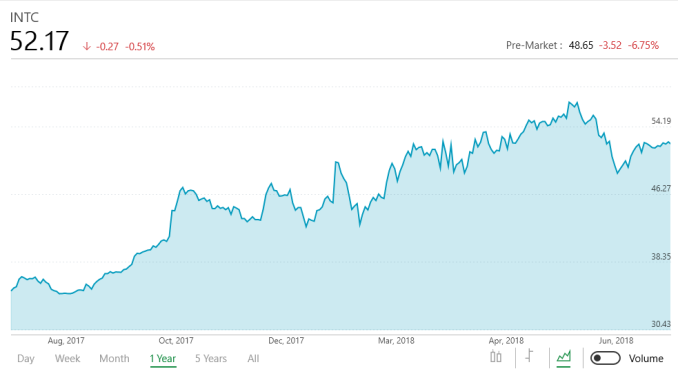
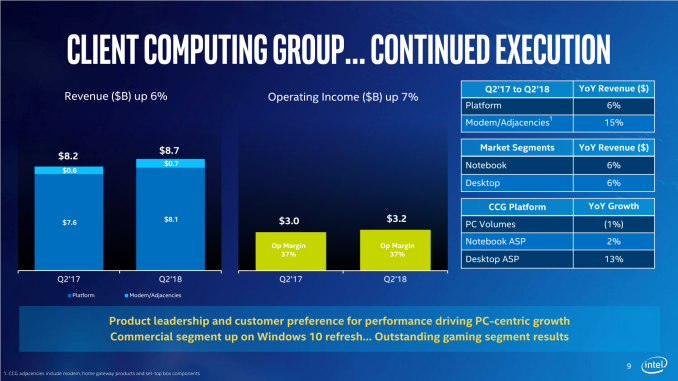
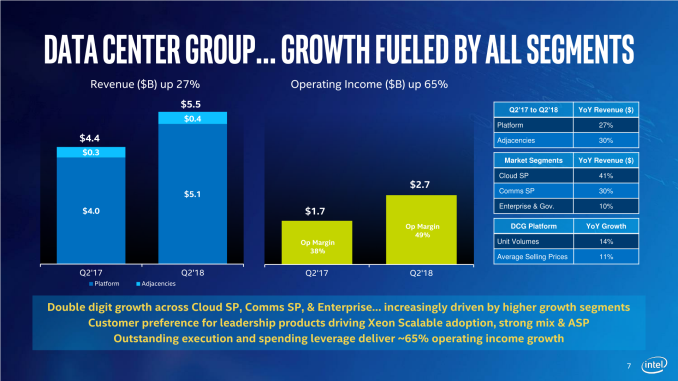
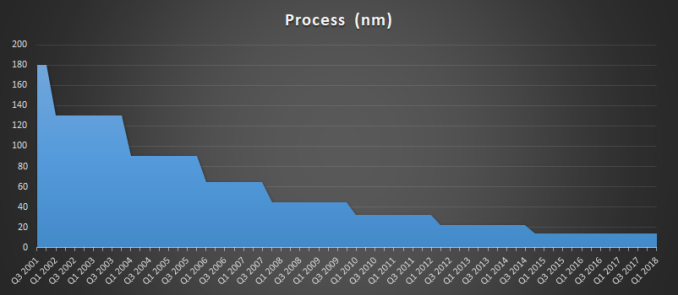

 Quote
Quote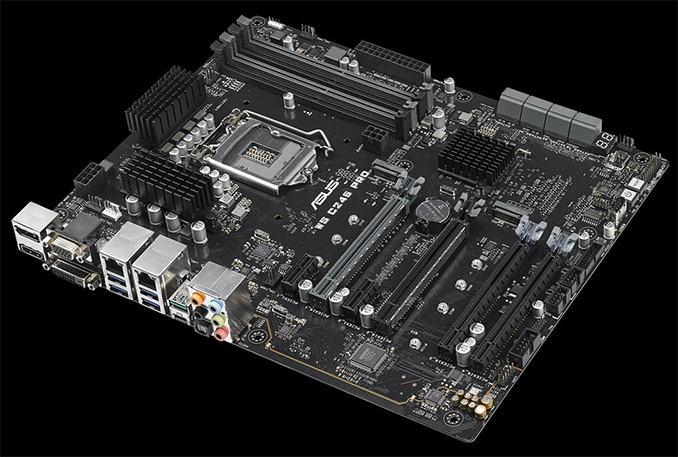

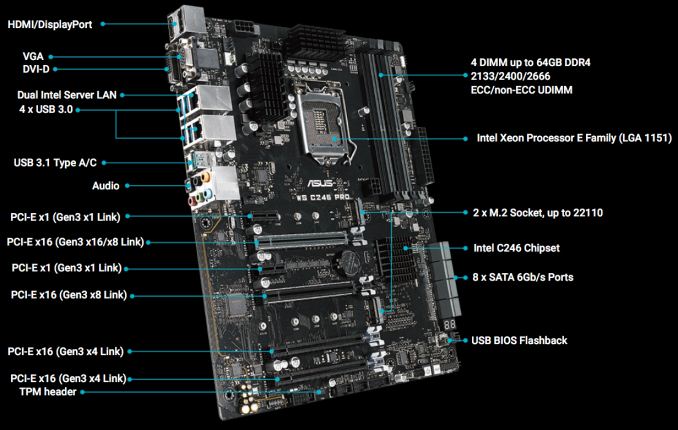
-678_575px.png)
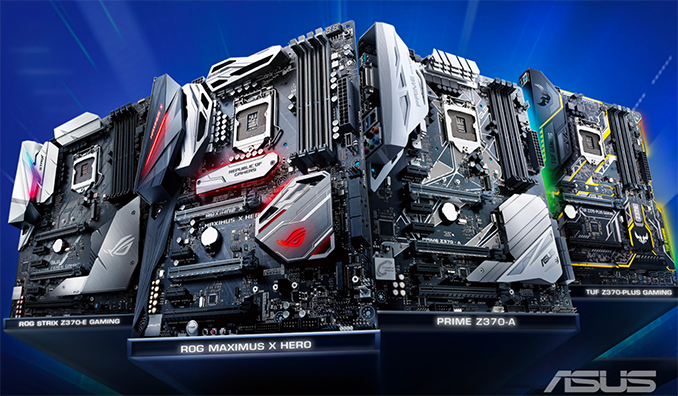
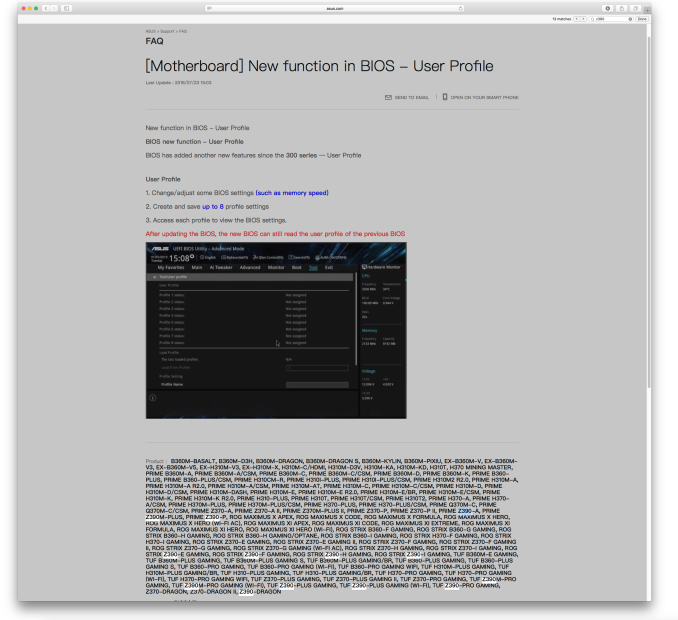

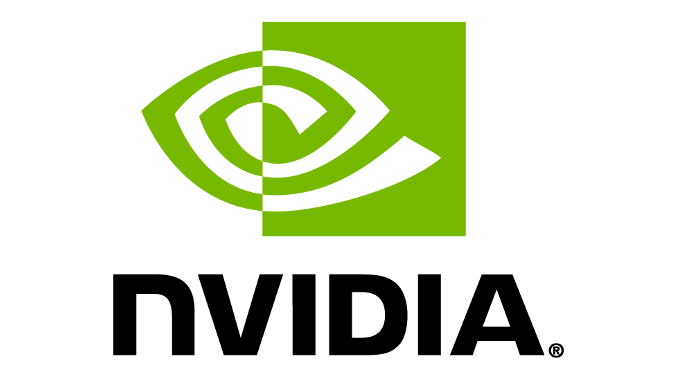
















Bookmarks